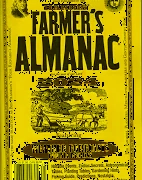Mastering the Art of Blogging: Pro Tips and Strategies
Guest post contributed by Arjun Raaj in India
In today’s digital age, blogging has become an essential tool for individuals and businesses alike to connect with a global audience, share valuable insights, and establish authority in various niches. However, with millions of blogs on the internet, standing out and mastering the art of blogging is no easy task.
Why Blogging Matters
Before diving into the tips and strategies, let’s understand why blogging matters. Blogs are versatile platforms that can serve various purposes, including:
- Building Authority: Consistently publishing high-quality content in your niche helps establish yourself as an expert in your field.
- Driving Traffic: Blogs can be a significant source of organic traffic to your website, boosting your online presence.
- Engaging Your Audience: Blogs allow you to engage with your audience, foster relationships, and receive feedback.
- Monetization: Successful blogs can generate income through various monetization methods, such as affiliate marketing, sponsored posts, and selling products or services.
Now, let’s delve into pro tips and strategies for mastering the art of blogging:
1. Define Your Niche and Audience
Successful blogging begins with a clear understanding of your niche and target audience. Your niche should be something you’re passionate about and have expertise in. By defining your niche, you can tailor your content to cater to a specific audience, making it more relevant and valuable.
2. Create High-Quality Content
Content is king in the blogging world. Focus on creating informative, engaging, and well-researched content that adds value to your readers. Use a mix of text, images, and multimedia elements to make your posts visually appealing and easy to digest.
3. Consistency Is Key
Consistency is crucial in blogging. Develop a posting schedule that you can realistically adhere to. Whether it’s once a week or once a month, consistency helps build trust with your audience and improves your blog’s search engine ranking.
4. Optimize for SEO
Search engine optimization (SEO) is vital for increasing your blog’s visibility. Research keywords relevant to your niche and incorporate them naturally into your content. Use meta descriptions, alt tags for images, and optimize your blog’s structure for SEO.
5. Engage with Your Audience
Engaging with your readers fosters a sense of community and encourages them to return. Respond to comments, answer questions, and seek feedback. Consider creating a mailing list to stay in touch with your audience through newsletters.
6. Network and Collaborate
Building relationships with other bloggers in your niche can be mutually beneficial. Networking can lead to guest post opportunities, backlinks, and a broader reach. Collaboration with influencers or complementary businesses can also expand your audience.
7. Promote Your Content
Creating great content is only half the battle; promoting it is the other half. Share your blog posts on social media, use email marketing, and consider paid advertising to reach a wider audience.
8. Monitor Analytics
Use tools like Google Analytics to track your blog’s performance. Analyze metrics such as traffic, bounce rate, and conversion rates to gain insights into what’s working and what needs improvement.
9. Stay Updated
Blogging is an ever-evolving field. Stay updated with the latest trends, technologies, and changes in search engine algorithms. Adapt your strategies accordingly to remain competitive.
10. Be Patient and Persistent
Blogging success takes time. Don’t be discouraged by slow growth initially. Stay persistent, learn from your mistakes, and keep refining your approach.
Conclusion
In conclusion, mastering the art of blogging requires dedication, continuous learning, and a passion for creating valuable content. By defining your niche, consistently producing high-quality content, and engaging with your audience and you can increase organic traffic, you can also build a successful blog that stands the test of time.
Remember, blogging is not just about the destination; it’s also about the journey of self-expression, learning, and growth. Happy blogging!





Follow us online!